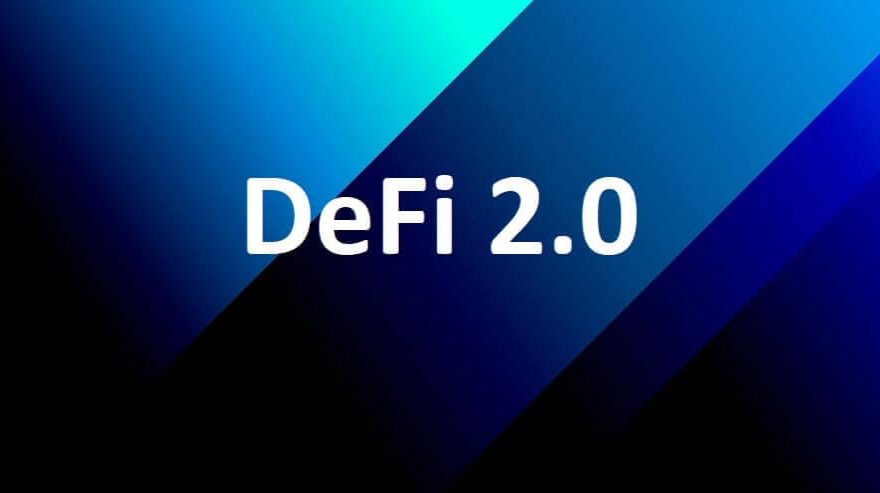The crypto market has always been available to everyone, but access has not always translated into actual investment. DeFi 2.0 could change this story.
DeFi 2.0 is Designed for Traditional Investors. In 2021, we experienced a boom in DeFi, with Aave and Compound exploiting the exponential rise in their tokens’ value and trading volume. With the liquidity-reported problems of venture funds, some difficulties led to the start of DeFi 2.0 through platforms such as OlympusDAO and Abracadabra.
The fundamental difference between DeFi 2.0 and DeFi, despite its new moniker, is a modification in the architecture of liquidity mining. The difference means that the goal is to make investors stay longer on the platform, ensuring that the project has the necessary funds to continue trading even after the initial fundraising (which pays a higher premium).
DeFi is not enough for traditional investors
DeFi was born to provide funding to anyone from a high-income New Yorker to a low-income resident of smaller communities worldwide. Unfortunately, that didn’t happen. The system did not work as expected with fees and high collateral requirements.
Although the industry is new, the jargon and limited user experience make things difficult for fluent English speakers or those without technology experience. In addition, The volatility of the cryptocurrency market, although lower than in previous years, still scares traditional investors.
In general, DeFi, as we know, it tends to lose a lot of efficiency for traditional investors due to the difficulty of finding the correct information that gives confidence and security to invest with some peace of mind and security. The great variety of offers, always offering a slightly higher APY (Annual Percentage Yield) than the previous one, makes it difficult to decide where to keep the invested capital.
For the fundraising entrepreneur, the problem is similar. If you are unfamiliar with cryptocurrencies, raising through DeFi can be a nightmare, from the experience of building the project to the high probability that investors will withdraw all funds within a month of starting staking.
How can DeFi 2.0 popularize investing?
Fortunately, the industry continues to evolve and provide new opportunities. With the rise of the DeFi 2.0 idea, a new approach to dealing with various sorts of investors has emerged. As projects classified as DeFi 2.0 evolve, the experience and ways of dealing with cryptocurrencies follow. From the change in the design of liquidity mining, which is the basic principle of this new phase of decentralized finance, capital management will be much simpler for both parties (investors and entrepreneurs).
Finally, DeFi 2.0 is born with a unique training feature through communities. Unlike DeFi’s inception, we now have the opportunity for a much more significant physical presence in these types of investments. As a result, the notion becomes more popular and widespread as we bring financial technology closer to “regular” people’s daily lives. The new phase of decentralized finance may reduce the minimum needed to apply for loans.
Until Ethereum solves its scalability problem or another network emerges with such strength, fees will remain high, making smaller transactions unviable. Fortunately, there are different blockchain options today, with a growing popularization of some positioned as alternatives. For example, we could highlight Solana (SOL), which has grown exponentially recently.
Do centralized alternatives to financing work?
When investing in cryptocurrencies, we tend to debate between decentralized and centralized. The point is that both work and are necessary for successful adoption. Although we have solid emerging DeFi platforms, centralized platforms are still an excellent starting point for traditional investors.
Unfortunately, there are still a lot of frauds out there, generally involving people who aren’t familiar with the Bitcoin sector and don’t know where to go for reliable information and secure projects. On the other hand, many exchange platforms invest their resources in funding some projects and allow the user to participate and receive the token of that project as a reward for their investment, as is the case with OKEx Jumpstart.
As much as purists want an utterly decentralized environment, this may become utopian, especially considering that most have no technical knowledge of blockchain or cryptocurrencies. Centralized institutions should continue to work to make cryptocurrencies increasingly accessible. Of course, this remains a possibility for DeFi, but it is essential to emphasize a market for everyone.
Finally, suppose you are a beginner and don’t yet have a great understanding of blockchain technology or structured DeFi operations. In that case, centralized finance can be a starting point until we have a better-structured DeFi 2.0.
To what extent can DeFi grow the industry?
DeFi Pulse‘s Total Record Value locked up (TVL) in DeFi was $113.700 billion on November 8, 2021. Browsing the historical chart of available values as a reference, we can see the sizeable exponential sector growth in 2021.
We must conclude that even using a system is in great need of improvement. The growth was exponential. Imagine what can happen with a more secure, intuitive, and viable method for investors and entrepreneurs. The DeFi story is still in its infancy, taking its first steps, and what comes next is likely to be the biggest game-changer in the recent history of traditional finance.
DeFi 2.0 will be the new chapter in the revolution that will return control of investments to the individual, ending the exploitative and exclusive side of traditional finance. Although it sounds utopian, the chances of it becoming a reality are very high.

